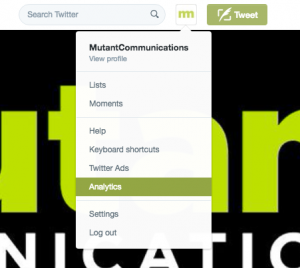It happens all too often – a client says they want a blog, but when a blog is delivered, they ask why it’s so short, or why the tone is so casual. Or, they say they want an op-ed that can be pitched to a top-tier industry publication, and then don’t understand why their company’s newest product isn’t specifically mentioned or detailed in the piece.
While it’s wonderful that this client knows content will help them boost their brand and generate leads, if they don’t understand the difference between types of content, things will be frustrating for both the content team and the client. Because, unlike a rose, an op-ed by any other name is an entirely different piece of content.
When communicating with the content team you’re working with, it’s vital that you are on the same page when it comes to the types of content they are producing for you – otherwise lots of time, energy and effort will be wasted. This is because different types of content are geared for different audiences and are meant to reach different goals.
For example, if you’re hoping to increase your CEO’s profile, a social media campaign is likely not the answer – thought leadership articles are. Likewise, if you’re launching a new report and want to extend the coverage of all that data you analysed, you’ll need more than press releases – you’ll want op-eds, blog posts and maybe an infographic or two.
If all of this has your head spinning, don’t worry – we’re here to help dispel the confusion surrounding different types of content. So let’s dive in, shall we?
Social Media Copy, Explained
Oh look, a Facebook post.
Pithy, punchy and to-the-point, social media calls for short-form copy (Sometimes, extremely short-form. A tweet, for example, is a maximum of 280 characters that is attention-grabbing, informative and creative (yes, emoji are completely acceptable and hashtags are a must – they help with discovery). It should be written in your brand’s voice and have a personality that resonates with your audience.
Though there are several different types of social media platforms today, the platforms most often used for business are Facebook, Instagram, Twitter and LinkedIn. While similar messaging can be pushed out via Facebook, Instagram and Twitter, LinkedIn is a professional network that is better suited. for business goals such as brand or product awareness and communicating employer brand messaging,
Getting the tone right for each platform is an important part of crafting social media copy, so understanding how different platforms operate and which platforms your audience prefers or frequents is crucial. After all, if your target demographic spends most of their time scrolling Instagram and you’re only on Facebook, you’re missing a huge opportunity to speak directly to and engage directly with them.
Thought Leadership Posts and Articles, Explained
When it comes to thought leadership, LinkedIn is the platform you want. Your company’s executives likely all already have LinkedIn profiles in order to network and keep up with industry news. And since the platform caters to professionals, it’s the perfect place to share thoughts on the state of the industry, general business news and the thought process behind your company’s latest developments.
There are a couple different ways to publish thought leadership on LinkedIn: the first is through a post. This is short-form content – anywhere from a line or two to a paragraph – where a professional shares a quick thought about a relevant business topic or a news article they link. Though quick and efficient, these posts do provide insider insights and help to build a personal brand.
The second option is to write and share an original article on LinkedIn. This option allows more freedom and space for an executive to really delve into a topic through a longer-form piece – usually around 400–700 words – providing followers, connections and other professionals a look into their thoughts about a particular event, industry trend or piece of global news.
In addition to positioning executives as experienced, authoritative, thoughtful leaders with a unique perspective, these pieces could also lead to greater networking opportunities, speaking engagements or even business partnerships.
Blogs, Explained
Behold, a blog post.
The goal of blogs is to communicate your company’s messaging, be it reiterating your vision, launching a new product or report, providing updates to your customers, or releasing a statement in times of crisis. These pieces are where you can not just promote your company and your products, but explain them in-depth and provide behind-the-scenes information or looks at innovation.
Often, blogs and social media work hand-in-hand: you can use your social media pages to promote new blog posts by giving readers a quick taste of what’s to come in the blog and enticing them to click the link and go to your website.
Op-Eds, Explained
When it comes to pitching articles to the media, it’s generally an op-ed – short for ”opposite the editorial page” (if you want to invite us to be on your pub quiz team, we understand) – that you want to pitch. These should be thought of as thought leadership pieces because an op-ed will include a company spokesperson or executive’s name as the author and will be written in their voice, from their perspective.
But unlike writing for a company blog or for LinkedIn, an op-ed that is pitched to a publication should be long-form – usually 600–1,000 words, depending on their guidelines – and should communicate your company’s vision or leader’s thoughts without specifically selling the company or its products/services.
This is an important distinction to make, and one that is easy to misunderstand. The reason why the company’s vision or product cannot be specifically detailed or mentioned is that if it is, the publication will consider the piece as an advertorial, which is, at the end of the day, an ad. And you have to pay for ads.
Op-eds, however, do not cost your company anything if they are accepted to publication and they can not only boost brand reputation and brand awareness, but will establish your business and leaders as a trusted voice in your sector.
Infographics, Explained
A combination of copy and design, infographics help to tell a story or explain events or systems visually. These can be very effective when communicating complicated ideas that are often difficult or confusing to explain with only copy, and are great to share online on any platform.
If you’re unsure about what type of designed content it is that you want, that is completely fine – feel free to provide examples of designed content you like and the content team can help you figure out what will work best for you.
Hopefully this content primer helped shed some light on how different pieces of content operate. However, if the event you head into your next meeting with your content team and you can’t remember the difference between a blog and an op-ed, don’t tell your agency you want five blogs and five articles, hoping they’ll figure out exactly what articles mean to you. Instead, explain your business goals – your content team should be able to help you narrow down what will work best for you.
Unsure what type of content works best for your brand? The Mutant content team is here for you. Send us an email to [email protected]









